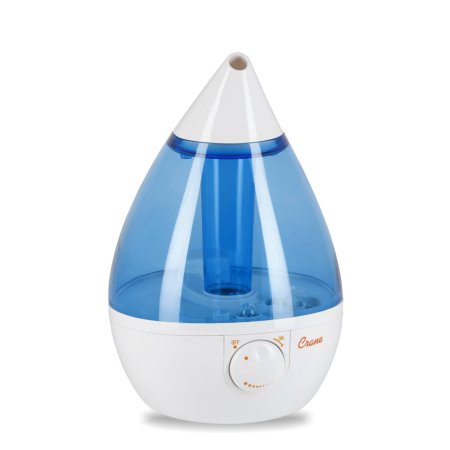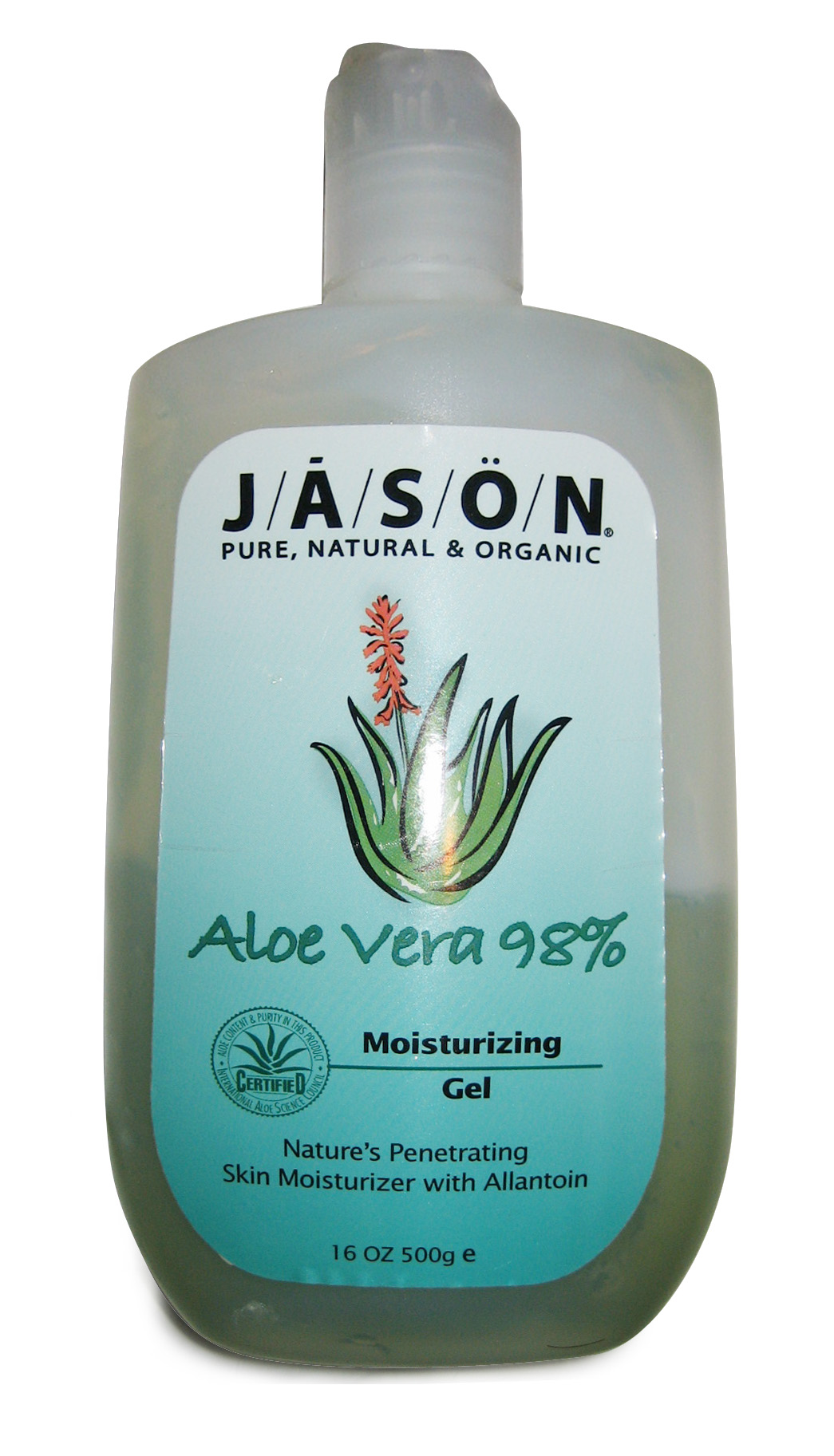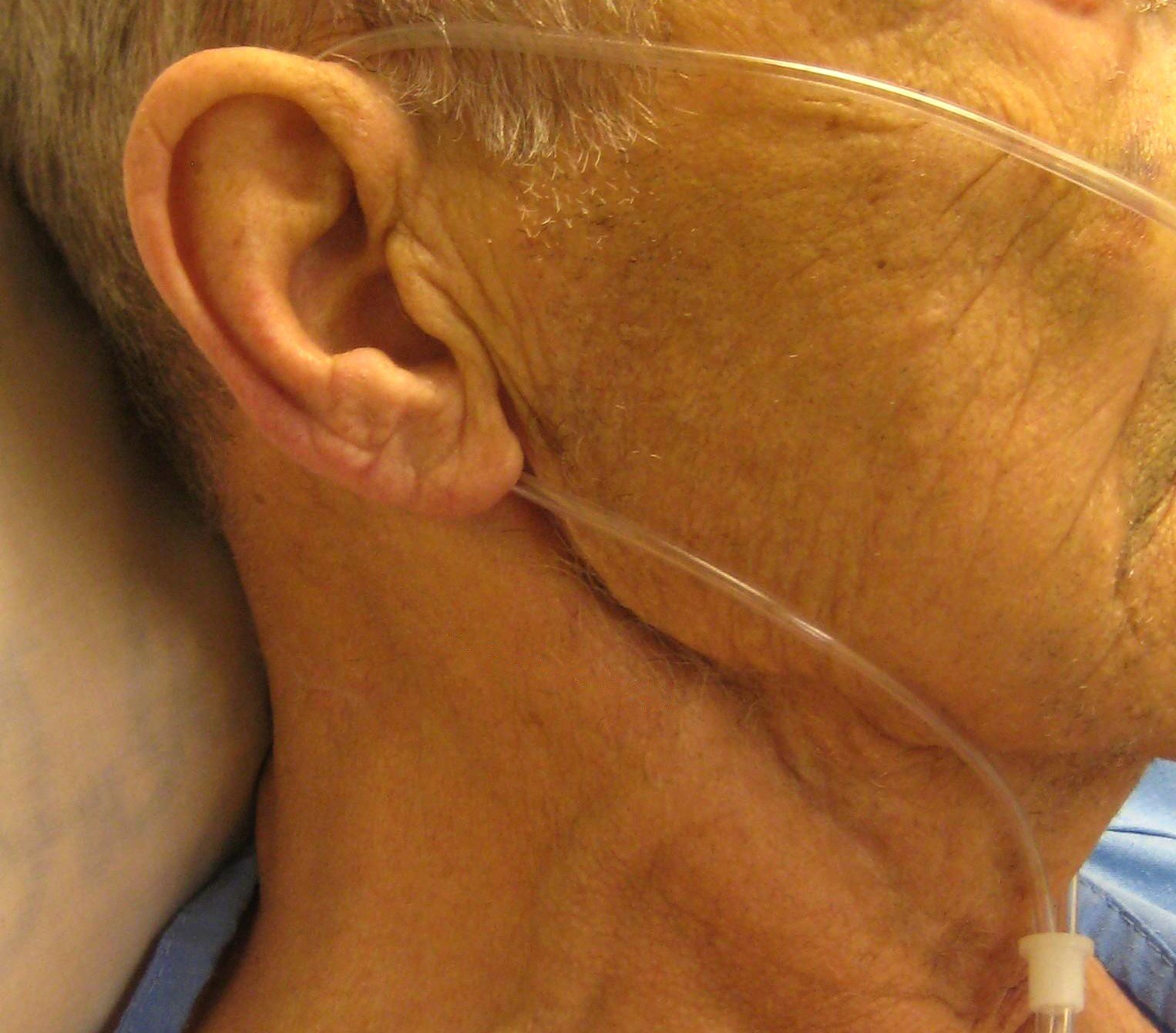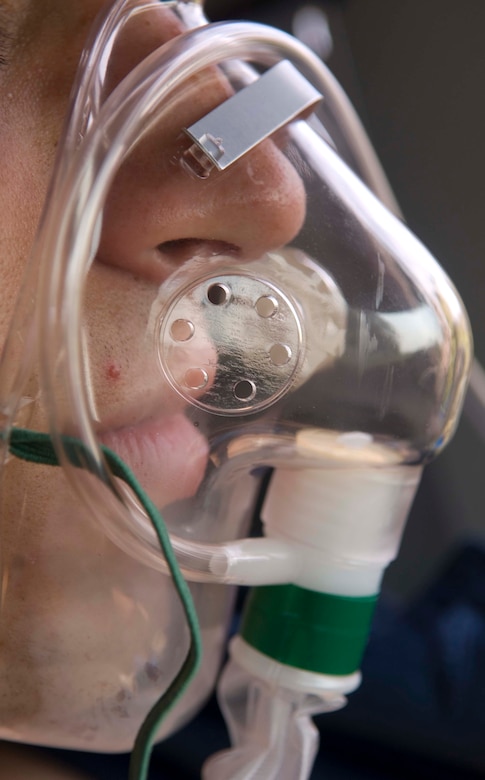
Supplemental oxygen therapy is an amazing, enabling, and life-saving tool that many people with COPD use every day. However, while it can significantly improve how you feel and help you live a better quality of life, supplemental oxygen often comes with its own uncomfortable side-effects and inconveniences.
For example, most patients at some point have problems with ear pain from the ear loops of their nasal cannula. Many patients also struggle to manage their oxygen therapy when they're out of the house, struggling to tote around their equipment and worrying about running out of oxygen before they get home.
Some other common problems that oxygen patients have include dryness and inflammation, which often happens when the constant stream of air through your oxygen delivery device dries out your throat and nasal passages. Another uncomfortable side-effect is skin irritation, which is common on areas of the the face where equipment and tubing touches the skin.
For many reasons, oxygen therapy can be a difficult thing to integrate into your everyday life, especially in the beginning. However, once you work out all the kinks and learn all the little tips and tricks that other oxygen patients have figured out along the way, you'll realize that there are plenty of ways to improve your oxygen therapy experience.
{{cta('fa8abc2a-1e88-4fa3-82fd-1cb5b9ed43b2','justifycenter')}}
In this article, we're going to help you solve these common problems by showing you how to make your oxygen therapy more comfortable in every way possible. We'll show you how to reduce the overall hassle of using supplemental oxygen and get rid of ailments like ear pain, nasal dryness, and skin irritation that many oxygen patients struggle with every day.
Although you can use ear protectors for oxygen tubing or ear pads for oxygen tubing, there is a lot more you can do to make your oxygen therapy experience more comfortable. We'll discuss a variety of simple, practical solutions ranging from recommendations for over-the-counter moisturizing products to tips for keeping your extension tubing out of the way. We'll also show you how to reduce the hassle of lugging portable oxygen tanks around with you everywhere you go, and how to make using oxygen outside your home more convenient and comfortable than ever.
Tips and Tricks to Make Your Nasal Cannula or Oxygen Mask More Comfortable
One of the most common sources of discomfort for people who use supplemental oxygen are oxygen masks and nasal cannulae. You have to wear both of these oxygen delivery devices on your face, which can sometimes be uncomfortable and get in the way of daily living.
Here are some of the most common problems that oxygen patients have with nasal cannulae and oxygen masks:
- Nasal dryness and nosebleeds
- Ear pressure and pain
- Skin irritation
- Soreness
- Tubing getting snagged, twisted, and pulled
- Excess moisture and condensation
Chances are, if you are on oxygen, you've experienced at least a few of these issues on occasion. If you use oxygen continuously, you might struggle with these problems a lot, which can take a significant toll on how you feel and how you live.
However, with the right equipment and accessories, and a bit of creative problem solving, you can significantly reduce or eliminate the frustration and discomfort of using oxygen with a nasal cannula or oxygen mask. In the next sections, we're going to address each of these ailments and show you a variety of tricks and simple solutions you can use today to make your oxygen therapy more comfortable and learn how to prevent cannula marks on the face.
Nasal Dryness and Nosebleeds

Many people struggle with dry nasal passages or get nosebleeds from using oxygen, especially those who use oxygen continuously or use a high oxygen flow rate. There multiple ways to address this symptom, and most patients are able to find significant relief with a combination of just a few simple techniques.
Besides feeling dry, other symptoms of nasal dryness include increased mucus production, thick or crusty mucus, or mucus that's streaked with red when you blow your nose. These are very common side-effects of oxygen therapy, but you can manage and minimize them using the tools and techniques we discuss in the following sections.
Most oxygen patients experience nasal dryness occasionally, but you should talk to your doctor if it is very severe or if you are unable to manage it on your own. Left untreated, nasal dryness can worsen COPD symptoms and make you more susceptible to getting sick.
Get an Oxygen Humidifier
If you struggle with nasal dryness or experience nosebleeds as a result of your oxygen therapy, talk to your doctor about getting a humidifier bottle with your oxygen delivery device. All you have to do is fill the bottle up with distilled water (not from the tap), hook it up to your tubing, and it will add moisture to the air passing through so that it's more humid by the time it makes it up to your nasal cannula or oxygen mask.
This is often a very effective way to reducing nasal dryness and can make the air that comes from your oxygen supply more comfortable to breathe. They are also cheap and simple to take care of; just rinse your bottle out daily daily rinses and give it a weekly wash with warm water, soap, and vinegar, just like you do for your nasal cannula.
Get a Home Humidifier
If it's wintertime or the air in your house is dry, you might also benefit from getting a humidifier for your home. You can use single-room humidifiers to moisturize the air in small spaces, or you can invest house humidifier for your HVAC system if you want to go all in.
Even just putting a small humidifier in your bedroom at night can make a huge difference, reducing how dry your skin and nose feels and even reducing your chance of nosebleeds. Especially if you live in a climate with low humidity, a humidifier can help you feel much more comfortable every day, and especially when you use oxygen.

For most people, a humidity level of around forty percent is considered ideal for breathing and comfort. However, some people prefer more or less humidity, and you can adjust your humidifier at home according to your personal taste.
Lubricating Jelly and Nasal Gel

Even if you use a humidifier for your oxygen delivery system and your home, you may still experience nasal dryness on occasion. When this happens, you can use other moisturizing products, like lubricating gels and jellies, that are available over the counter at most superstores and pharmacies.
Nasal gels and jellies are topical lubricating substances that you can apply to the skin inside and underneath your nose. They help seal in moisture in your nasal passage and can reduce friction and soreness caused by the prongs of your nasal cannula.
All you have to do is wash your hands and use your finger or a cotton swab to apply a thin layer of lubricant to the skin just inside your nostrils. You may need to blow your nose after or use a clean towel to remove excess product afterward.
However, don't forget that you should not use petroleum products on your skin if you're going to be using supplemental oxygen, especially on or near your face. Petroleum is very flammable, and when combined with purified oxygen, it becomes even more flammable, raising the risk of serious burns to your face should a fire ignite. Because of this, you should always look for non-petroleum, water-based lubricants instead.
Popular brands of non-petroleum nasal gels include Nasogel, Ayr, and RoEzIt; some patients find that aloe vera works great as well. If you're having trouble finding a gel or have any questions about what nasal lubricant is safe with oxygen, talk to your doctor and ask what products he recommends for you.
Saline Nasal Sprays
Using a saline nasal spray is another effective over-the-counter solution for nasal dryness and soreness caused by oxygen therapy. These products contain a simple solution of water and salt that can be surprisingly effective at soothing and lubricating dry nasal passages.
Note that you should use a spray with a plain saline solution, not the medicated sprays that are often advertised for stuffy noses and colds. Salt water on its own is plenty effective and can be used several times a day, while medicated sprays must be used sparingly and can cause serious side-effects and dependence.

Along with reducing pain and discomfort, moisturizing your nasal passages with a saline spray can also reduce your risk of illnesses and infections. Nasal dryness makes your mucus thick and sticky, raising the risk of trapping harmful bacteria in your airways.
It can also cause the delicate skin in your nose to get dry and cracked, which can make you more likely to get sick. The cracks act like sanctuaries for bacteria, allowing them to multiply and giving them an opportunity to infect your body.
Reducing Skin Dryness and Irritation
Another common problem that patients have with oxygen therapy is dry and irritated patches of skin. Problem areas tend to be the lips, the skin under the nose, and other areas of the face that are near or in contact with your nasal cannula, oxygen, mask, or tubing.
This can be the result of rubbing, chaffing, or the constant flow of air drying out your skin. When you use oxygen continuously, the dryness and irritation doesn't have time to heal, and it will only get worse and worse with time if you don't do something about it.

Luckily, there are plenty of simple solutions for dryness and irritation that can help your skin heal and reduce the chances of future inflammation. In the following sections, we'll discuss a variety of tried-and-true products and techniques that many oxygen patients use to treat skin irritation and make oxygen therapy much easier to deal with.
Use Water-Based Moisturizers on Your Face & Lips

Many of the same moisturizers that you'd use to treat nasal dryness can be used to reduce irritation and chaffing on your skin. Any kind of moisturizing gel or cream can work as long as it's water-based and doesn't contain oils.
Moisturizer can reduce friction and inflammation on any areas of your skin that your head straps, tubing, or other equipment tends to rub against. It's also great for both treating and preventing dry patches that happen as a result of dry air or skin irritation.
Using oxygen can also cause your lips to get chapped, especially if you use an oxygen mask instead of a nasal cannula. You might think the best fix for this is lip balm, but most lip balm brands, including Vaseline, Chapstick, and Blistex, contain petroleum or other oils which can be dangerous to use with oxygen.
Instead, you can use the same water-based lubricants you'd use elsewhere on your skin, like RoEzIt or Vitamin E. You can also find petroleum-free, water-based lip balms from many online retailers that have skin and beauty products for sale.
Use Padding
Many oxygen patients experience discomfort and soreness from tubing, straps, or the edges of their oxygen mask pressing against their skin. In addition to using moisturizers to lubricate the places where the equipment touches your skin, you can use foam and fabric padding to soften the sore points.
There are a variety of different kinds of soft pads and fabric covers you can get to make oxygen masks and nasal cannulae more comfortable to wear. You can find dozens of different options designed to pad all the different areas of your face and head that are prone to experiencing pressure, friction, and discomfort.

For nasal cannulae, you can get small cheek pads to put under the parts of the tubing that stretch across your cheeks. You can also get padding that reduces pain and pressure on your ears, which bear the weight of holding your cannula in place.
For oxygen masks, you can get rubber pads and soft gel pads to soften the point where the mask rests on the bridge of your nose—a common sore point for patients who use masks. You can also get padding and fabric covers for the forehead strap and for straps that go behind your head.
Another common issue with oxygen masks are the lower straps that stretch across your cheeks, which can leave visible red marks and indentations that last for awhile after you take the mask off. To solve this problem, you can buy padded fabric covers designed to reduce the pressure of the strap on your skin, which helps eliminate red marks on your face.
Adding some padding and strap covers can make your mask much more comfortable to wear, especially if you use oxygen continuously or at night. Just make sure you remember to remove and clean any pads or covers your use often with warm soap and water, and replace the padding regularly as the manufacturer recommends. You can also try investing in an extra soft nasal cannula.
Cover Your Tubing
Wrapping the tubing in fabric or foam is a common and very effective solution for skin troubles caused by the friction of a nasal cannula sitting against your face. The constant contact and occasional rubbing can cause soreness and skin irritation over time, which can make oxygen therapy very uncomfortable.
Some people are able to solve this problem simply by finding an oxygen cannula type made with a softer tubing. However, if it doesn't work or you don't have a softer cannula available, then wrapping the tubing in fabric is often the next best option.

There are many different types of fabric tubing covers that you can buy, or you can even make your own if you're handy with a needle and thread. However, the simplest quick solution is to wrap the tubing yourself with fabric first-aid tape, which is cheap, readily available, and easy to use.
To wrap your tubing yourself, get some rolls of white, fabric, self-sticking first-aid tape from your local department store or pharmacy. Then, carefully wrap it all around both sides of your nasal cannula, completely covering the tubing from the prongs to your ears. You can double-wrap it if a single wrap isn't soft-enough, or to reinforce parts of the tubing that cause the most irritation.
However, it's important to remember to keep your tubing covers clean and replace them on a regular basis. If you use a fabric cover, make sure you remove and clean them often. If you covered your tubing in first-aid tape, you should remove and dispose of the tape at least once a week and replace it with fresh tape.
Check Your Fit
Sometimes, skin irritation is a sign that your oxygen mask or nasal cannula isn't fitting you properly. If it's too tight, too big, or sits too loosely on your face, it can cause unnecessary friction and chaffing.
If you are having chronic problems with soreness or irritation, talk to your doctor or your oxygen supply company about getting a new nasal cannula or oxygen mask. You might need to try a different size, a different design, or a different brand in order to find one that fits your face more comfortably.
If you use a nasal cannula, you may also need to try a mask with softer tubing or different prongs. Different cannulas have prongs with slightly different shapes, lengths, and orientations, and which one feels right to you is a matter of personal comfort. Many oxygen patients find that their oxygen therapy is much easier to tolerate once they find a cannula that's the right shape and softness for their face.
Tips for Managing Moisture & Condensation

Some patients struggle with moisture and condensation collecting inside of their oxygen mask or nasal cannula, which can be uncomfortable and make it more difficult to breathe. Excess moisture can also help breed bacteria, which is why you should always try to keep your mask or nasal cannula as clean and dry as possible.
Whenever you notice moisture on the inside of your mask, take it off for a moment and wipe it down with a clean, dry cloth. You should also wash your mask often with warm water and soap at least once a week to remove any mucus, bacteria, or other foreign substances from your mask (but make sure you check the cleaning instructions for your specific mask, first).
Reducing Moisture and Condensation in Your Tubing
Most oxygen patients at some point experience “rain out,” which happens when a lot of condensation forms and collects in your tubing. This tends to be a problem when the humidity is too high or when the outside air is too cold.
For example, if you're using oxygen with a humidifier in a cold room, the tubing gets cooled down by the cold outside air. This can cause the moisture to condense out of the air flowing through the tube, causing water droplets to form in your nasal cannula, oxygen mask, and extension tubing.
This can make it difficult to breathe or cause you to get water in your nose and mouth when you breathe in. It also creates a moist environment that bacteria and mold could grow in if it stays too damp for too long.
To solve this problem, you can turn your oxygen humidifier down to reduce the amount of moisture in the tubing. You can also get a piece of equipment called an inline water trap, a special piece of tubing that attaches to your extension tubing and is meant to catch condensation before it makes it into your nasal cannula or mask.
You can also turn up the heat on your furnace to raise the temperature in the room, which prevents the tubing from getting too cold and causing the moisture inside to condense. Another way to warm up your tubing is to run it underneath a blanket or wrap it in a fabric cover to keep it warm.
If none of these other solutions work, you may need to turn off your humidifier completely to keep the condensation at bay. Once you're in a better environment that won't cause rain out, you can use your oxygen humidifier again.
Reducing Ear Pain and Pressure

Ear pain and pressure is another extremely common problem that patients have with supplemental oxygen therapy. It happens because nasal cannulae are held up by looping over your ears, and the weight creates pressure that can be extremely uncomfortable. If you have to wear a nasal cannula every day for an extended period of time, it can be especially painful and difficult to manage.
Luckily, since it's such a common issue, there are several effective techniques and products available for reducing ear pain and discomfort with oxygen therapy. There are a variety of different types of padding, connectors, specialized nasal cannulae, and more that can make nasal cannulae much more comfort


